How to protect the pump from dry running
The water supply system of a private house is impossible without a pump. But it must be turned on and off in some way, make sure that it does not work in the absence of water. The water pressure switch is responsible for turning the pump on and off, and the protection against dry running of the pump should monitor the presence of water. How to implement this protection in different situations will be discussed further.
The content of the article
What is dry running pump
Wherever the pump is pumping water, sometimes a situation is created that the water has run out - with a small flow rate of a well or a well, you can simply pump out all of the water. If water is pumped from a centralized water supply system, its supply may simply be stopped. The operation of the pump in the absence of water is called dry running. Sometimes the term "idle" is used, although this is not entirely correct.
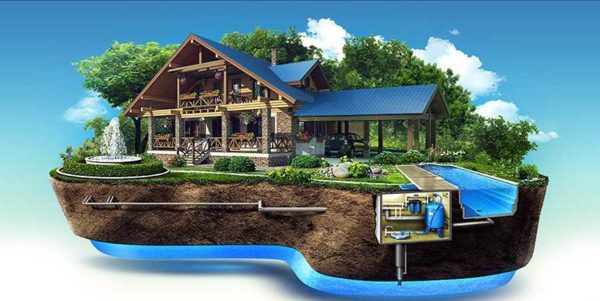
In order for the water supply at home to work normally, you need not only a pump, but also a dry water protection system, automatic on / off switch
What's wrong with dry running other than wasting electricity? If the pump runs in the absence of water, it overheats and burns out - the pumped water is used to cool it. No water - no cooling. The engine will overheat and burn out. Therefore, protection against dry running of the pump is one of the components of the automation, which will have to be purchased. There are, however, models with built-in protection, but they are expensive. It is cheaper to buy automation equipment.
How can you protect the pump from dry running?
There are several different devices that will shut off the pump in the absence of water:
- dry running protection relay;
- water flow control devices;
- water level sensors (float switch and level control relay).
All these devices are designed for one thing - to turn off the pump in the absence of water. Only they work in different ways, have different areas of application. Next, we will understand the features of their work and when they are most effective.
Dry-running protection relay
A simple electromechanical device controls the presence of pressure in the system. As soon as the pressure drops below the threshold, the power circuit is broken, the pump stops working.
The relay consists of a membrane that reacts to pressure and a contact group, which is normally open. When the pressure drops, the membrane presses on the contacts, they close, turning off the power.
When is it effective
The pressure to which the device responds is from 0.1 atm to 0.6 atm (depending on the factory settings). This situation is possible when there is little or no water at all, the filter is clogged, the self-priming part is too high. In any case, this is a dry running condition and the pump must be turned off, which is what happens.
An idle protection relay is installed on the surface, although there are models in a sealed case. It works normally in an irrigation scheme or any system without a hydraulic accumulator. Works more effectively with surface pumps when a check valve is installed after the pump.
When it does not guarantee shutdown in the absence of water
You can put it in a system with GA, but you will not get 100% protection against dry running of the pump. It's all about the features of the structure and operation of such a system. A protective relay is installed in front of the water pressure switch and the hydraulic accumulator. In this case, there is usually a check valve between the pump and the protection, that is, the membrane is under pressure created by the accumulator.This is a common pattern. But with this method of switching on, a situation is possible when a working pump in the absence of water will not turn off and burn out.
For example, a dry running situation has been created: the pump has turned on, there is no water in the well / well / tank, there is a certain amount in the accumulator. Since the lower pressure threshold is usually set on the order of 1.4-1.6 atm, the protective relay membrane will not work. After all, there is pressure in the system. In this position, the membrane is wrung out, the pump will run dry.
It will stop either when it burns out or when most of the water supply is used up from the accumulator. Only then will the pressure drop to a critical one and the relay will be able to work. If such a situation arises during the active use of water, nothing terrible will happen in principle - several tens of liters will dry out quickly and everything will be normal. But if it happened at night, they flushed the water in the tank, washed their hands and went to bed. The pump has started, there is no signal to shutdown. By the morning, when the parsing of water begins, it will be inoperative. That is why, in systems with hydraulic accumulators or pumping stations, it is better to use other protection devices against dry running of the water pump.
Water flow control devices
In any situation that causes the pump to run dry, there is little or no water flow. There are devices that monitor this situation - relays and water flow controllers. Relays or flow sensors are electromechanical devices, controllers are electronic.
Relay (sensors) flow
There are two types of flow sensors - lobe and turbine. The petal has a flexible plate that is located in the pipeline. In the absence of water flow, the plate deviates from the normal state, contacts are triggered, turning off the pump power.
- This is how petal flow sensors look
- Lobe sensor device
- Turbine water flow sensor device
- Water flow sensor for plumbing
- Types and parameters of water flow sensors for a pump
Turbine flow sensors are somewhat more complex. The basis of the device is a small turbine with an electromagnet in the rotor. In the presence of a flow of water or gas, the turbine rotates, an electromagnetic field is created, which is converted into electromagnetic pulses read by the sensor. This sensor, depending on the number of pulses, turns on / off the pump power.
Flow controllers
Basically, these are devices that combine two functions: protection against dry running and a water pressure switch. Some models, plus these functions, may have a built-in pressure gauge and a check valve. These devices are also called electronic pressure switches. These devices cannot be called cheap, but they provide high-quality protection, serving several parameters at once, providing the required pressure in the system, turning off the equipment when there is insufficient water flow.
| Name | Functions | Dry-running protection actuation parameters | Connecting dimensions | Manufacturer country | Price |
|---|---|---|---|---|---|
| BRIO 2000M Italtecnica | Pressure switch + flow sensor | 7-15 sec | 1 "(25mm) | Italy | 45$ |
| AQUAROBOT TURBIPRESS | Pressure switch + flow switch | 0.5 l / min | 1 "(25mm) | 75$ | |
| AL-KO | Pressure switch + check valve + dry-running protection | 45 sec | 1 "(25mm) | Germany | 68$ |
| Jileks automation unit | Pressure switch + protection against idling + pressure gauge | 1 "(25mm) | Russia | 38$ | |
| Aquario automation unit | Pressure switch + protection against idling + pressure gauge + check valve | 1 "(25mm) | Italy | 50$ |
In the case of using the automation unit, the hydraulic accumulator is an unnecessary device. The system works perfectly for the appearance of a flow - opening a tap, triggering household appliances, etc. But this is if the head margin is small. If the gap is large, both a GA and a pressure switch are needed. The fact is that the pump shutdown limit in the automation unit is not adjustable.The pump will only turn off when it has reached the maximum pressure. If it is taken with a large headroom, then it can create excessive pressure (optimal - no more than 3-4 atm, everything higher leads to premature wear of the system). Therefore, after the automation unit put pressure switch and a hydraulic accumulator. This scheme makes it possible to regulate the pressure at which the pump is turned off.
Water level sensors
These sensors are installed in a well, borehole, tank. It is advisable to use them with submersible pumps, although they are compatible with surface pumps. There are two types of sensors - float and electronic.
Float
There are two types of water level sensors - for filling the tank (protection against overflow) and for emptying - just protection against dry running. The second option is ours, the first is needed when filling out basin... There are also models that can work both ways, and the principle of operation depends on the connection diagram (goes in the instructions).
The principle of operation when used for dry-running protection is simple: as long as there is water, the float sensor is lifted up, the pump can work, as soon as the water level has dropped so much that the sensor has dropped, the contactor opens the pump power circuit, it cannot turn on until until the water level rises. To protect the pump from idling, the float cable is connected to the break in the phase wire.
Level control relay
These devices can be used not only to control the minimum water level and dry running in a well, well or storage tank. They can also control overflow (overflow), which is often necessary if there is a storage tank in the system, from which water is then pumped into the house or when organizing the water supply to the pool.
Electrodes are lowered into the water. Their number depends on the parameters that they track. If you only need to monitor the presence of a sufficient amount of water, two sensors are enough. One - goes down to the level of the lowest possible level, the second - the base - is located just below. The work uses the electrical conductivity of water: while both sensors are immersed in water, small currents flow between them. This means that there is enough water in the well / well / tank. If there is no current, this means that the water has dropped below the minimum level sensor. This command opens the pump supply circuit and stops operation.
These are the main ways in which dry-running protection of the pump is organized in the water supply systems of a private house. There are also frequency converters, but they are expensive, so it is advisable to use them in large systems with powerful pumps. There they quickly pay off due to energy savings.

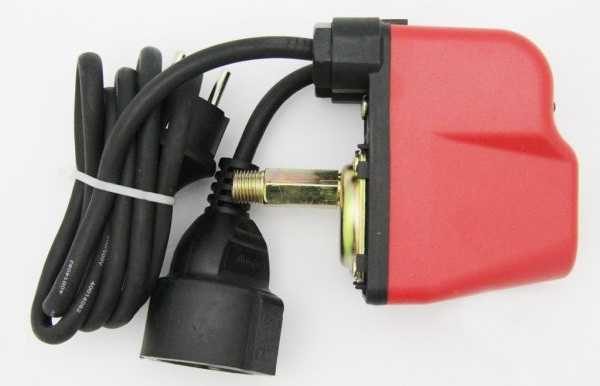
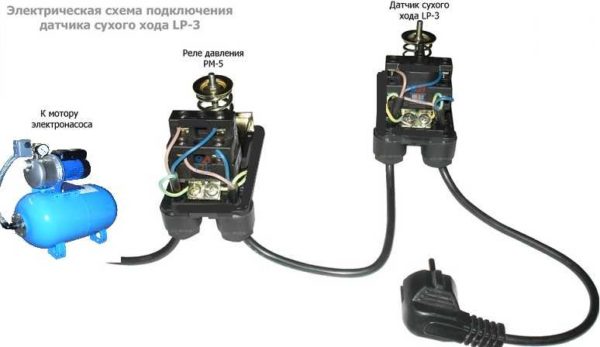
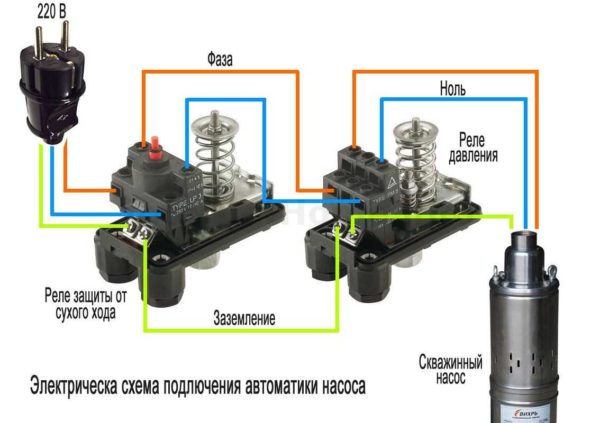
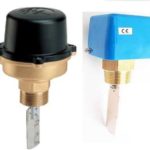
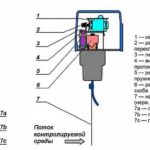
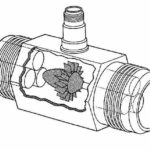
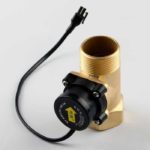
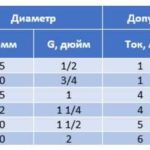
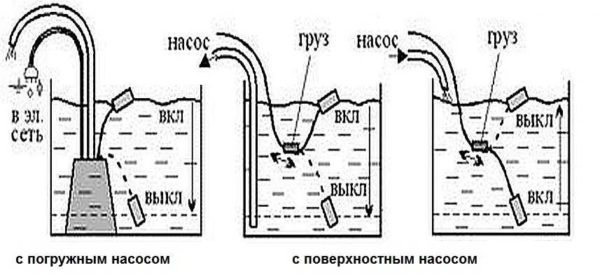
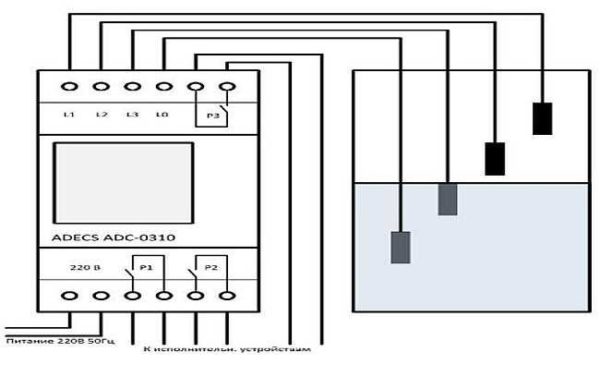
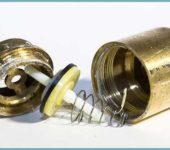
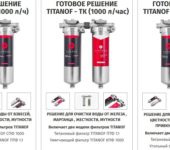

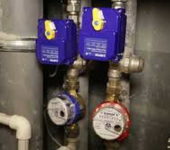
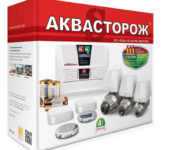





when he talks in the video about connecting the dry-running protection relay at 11.42, the author says that the devices are connected in parallel, in fact they are connected SERIOUSLY
the connection must be parallel in any case.
I stupidly need to pump water into the tank and you offer a whole system that costs more than a pump
So you stupidly and swing, wear the option with buckets)))